Tungsten Carbide Forstner Bits Ⅶ
- Details
- Category: Tungsten Information
- Published on Wednesday, 25 November 2015 13:42
In last part we know that tungsten carbide Forstner bits can only be used in a drill press, cannot remove chips automatically, are relative more expensive and difficult to sharpen. In this part we explain how to sharpen a Forstner bit.
Some woods, such as cedar, contain silicates that can gradually dull, albeit slower, the tungsten carbide Forstner bits. To sharpen a Forstner bit, we can follow the below steps:

(The End--This article is divided into several parts. Here is part 7. For part 6 please refer to http://news.chinatungsten.com/en/tungsten-information/80739-ti-10469)
| Tungsten Carbide Supplier: Chinatungsten Online tungsten-carbide.com.cn | Tel.: 86 592 5129696; Fax: 86 592 5129797;Email:sales@chinatungsten.com |
| Tungsten News&Tungsten Prices, 3G Version: http://3g.chinatungsten.com | Molybdenum News & Molybdenum Price: http://news.molybdenum.com.cn |
Tungsten Carbide Forstner Bits Ⅵ
- Details
- Category: Tungsten Information
- Published on Wednesday, 25 November 2015 13:39
In last part we know that tungsten carbide drill bits have special cutting rims, which make them able to drill holes cleanly, more precisely, faster and better than other bits, and are multifunctional as well. In this part we explain the drawbacks and precautions to use a Forstner bit.
In most cases all tungsten carbide Forstner bits are intended for mounted drill presses rather than hand-held tools. They typically require a lot of force, which can be dangerous and sometimes even unwieldy on a smaller appliance.
So people who want to use it typically have to invest in a drill press, and even then they often have to have at least a bit of training in order to control and properly use it. The bits also tend to be somewhat difficult to sharpen, and they don’t have any way of blowing dust back out the way some bits do; what this means in practical terms is that carpenters may have to pause more often to clear the bores. These bits also tend to be a bit more expensive than their counterparts.
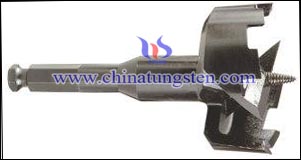
(To be continued. This article is divided into several parts. Here is part 6. For part 5 please refer to http://news.chinatungsten.com/en/tungsten-information/80738-ti-10466; for part 7 please refer to http://news.chinatungsten.com/en/tungsten-information/80740-ti-10470)
| Tungsten Carbide Supplier: Chinatungsten Online tungsten-carbide.com.cn | Tel.: 86 592 5129696; Fax: 86 592 5129797;Email:sales@chinatungsten.com |
| Tungsten News&Tungsten Prices, 3G Version: http://3g.chinatungsten.com | Molybdenum News & Molybdenum Price: http://news.molybdenum.com.cn |
Tungsten Carbide Forstner Bits Ⅴ
- Details
- Category: Tungsten Information
- Published on Wednesday, 25 November 2015 13:34
In last part we know that tungsten carbide Forstner bits are especially used to drill through multiple pieces of wood or precise hinge holes in furniture making. They come in varied sizes from 0.25 to over 3 inches (6 to 75 mm) to form a set. In this part we explain the benefits to use a Forstner bit.
Carpenters often praise this bit’s ability to drill precisely and cleanly through imperfections, like knots and baubles, in wood. A lot of this owes to the rim. The Forstner bit’s rim guides itself, which means that it won’t be thrown off when it hits problem areas or end-grain the way a center point-guided bit could be.
Speed and precision are also important factors. Experienced woodworkers often say that the Forstner bit is able to do work faster and better than almost any other bit, and can do a number of different tasks, too. It can drill both complete holes and partial bores; it can cut on an angle and against the grain.
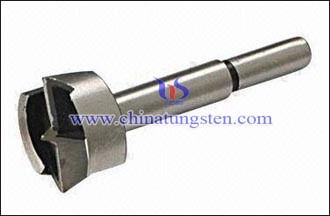
(To be continued. This article is divided into several parts. Here is part 5. For part 4 please refer to http://news.chinatungsten.com/en/tungsten-information/80737-ti-10467; for part 6 please refer to http://news.chinatungsten.com/en/tungsten-information/80739-ti-10469)
| Tungsten Carbide Supplier: Chinatungsten Online tungsten-carbide.com.cn | Tel.: 86 592 5129696; Fax: 86 592 5129797;Email:sales@chinatungsten.com |
| Tungsten News&Tungsten Prices, 3G Version: http://3g.chinatungsten.com | Molybdenum News & Molybdenum Price: http://news.molybdenum.com.cn |
Tungsten Carbide Forstner Bits Ⅳ
- Details
- Category: Tungsten Information
- Published on Wednesday, 25 November 2015 12:01
In last part we know that tungsten carbide Forstner bits are guided by outside rim instead of the center spur, use cutting edges to shear wood and radial sides to smooth the hole and finally create a flat bottom hole. In this part we explain where and when to use a Forstner bit.
Today, the tungsten carbide Forstner bits are more commonly used by furniture makers and home builders. Big projects like these often require a drill that can quickly move through multiple pieces, join different types of wood, and cut through multiple surfaces. The tungsten carbide Forstner bit fits that bill for many carpenters.
They are available in a wide array of diameters, typically ranging from 0.25 to over 3 inches (6 to 75 mm), and they are often sold in sets that come with an array of sizes. Even bits with very small diameters are often able to bore through deep, thick wood at most angles. Their unique shape makes them very efficient at removing a lot of material, known as “hogging,” in a short amount of time. They’re also really useful for making precise holes for hinges and other moving parts.
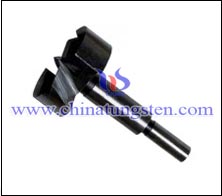
(To be continued. This article is divided into several parts. Here is part 4. For part 3 please refer to http://news.chinatungsten.com/en/tungsten-information/80736-ti-10468; for part 5 please refer to http://news.chinatungsten.com/en/tungsten-information/80738-ti-10466)
| Tungsten Carbide Supplier: Chinatungsten Online tungsten-carbide.com.cn | Tel.: 86 592 5129696; Fax: 86 592 5129797;Email:sales@chinatungsten.com |
| Tungsten News&Tungsten Prices, 3G Version: http://3g.chinatungsten.com | Molybdenum News & Molybdenum Price: http://news.molybdenum.com.cn |
Tungsten Carbide Forstner Bits Ⅲ
- Details
- Category: Tungsten Information
- Published on Wednesday, 25 November 2015 12:00
In last part we know that tungsten carbide Forstner bits are characteristic of a center point, cylindrical cutting edges and radial cutting edges, and no mechanism to clear chips. In this part we explain how a Forstner bit works.
Most drills are guided through material by a central point, but Tungsten carbide Forstner bits are primarily guided by the outside rim. This means that they can be used to drill pocket holes, which are holes drilled at an angle; partially overlapping holes; and holes that are on the edge of the material. They have central spurs, but these are normally used to locate and mark a center-point rather than to serve as the actual drill guide.
When the tungsten carbide Forstner bit enters wood, it bores down by essentially spinning fragments up and out with a sawing, rotary motion. The sides of the bit often look jagged and when they first enter the wood they often shear it and leave it somewhat splintery. As the bit’s radial sides continue through the hole, though, the edges tend to smooth out. Most of the time the result is a flat-bottomed hole.
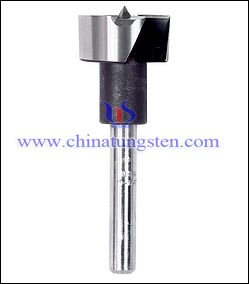
(To be continued. This article is divided into several parts. Here is part 3. For part 2 please refer to http://news.chinatungsten.com/en/tungsten-information/80701-ti-10455; for part 4 please refer to http://news.chinatungsten.com/en/tungsten-information/80737-ti-10467)
| Tungsten Carbide Supplier: Chinatungsten Online tungsten-carbide.com.cn | Tel.: 86 592 5129696; Fax: 86 592 5129797;Email:sales@chinatungsten.com |
| Tungsten News&Tungsten Prices, 3G Version: http://3g.chinatungsten.com | Molybdenum News & Molybdenum Price: http://news.molybdenum.com.cn |
Processing of Ammonium Paratungstate from Tungsten Ores
- Details
- Category: Tungsten Information
- Published on Wednesday, 25 November 2015 11:25
| Tungsten Supplier: Chinatungsten Online www.chinatungsten.com | Tel.: 86 592 5129696; Fax: 86 592 5129797;Email:sales@chinatungsten.com |
| Tungsten News & Prices, 3G Version: http://3g.chinatungsten.com | Molybdenum News & Molybdenum Price: http://news.molybdenum.com.cn |
Structural Evolution of Ammonium Paratungstates during Thermal Decomposition
- Details
- Category: Tungsten Information
- Published on Wednesday, 25 November 2015 10:34
Experimental
Ammonium paratungstate (APT), (NH4)10H2W12O42*4H2O (OSRAM) was used as purchased. Transmission X-ray absorption spectra were measured in situ with the sample pellet in a flow reactor (4 ml total volume) under a controlled reactant atmosphere. In situ XAS experiments were performed at the W LIII edge (10.204 keV) (Hamburger Synchrotron Radiation Laboratory, HASYLAB, beamline X1), using a Si (311) double crystal monochromator. Temperature programmed decomposition was carried out at temperatures between 300 and 773 K in atmospheres of pure helium, 5 % hydrogen in helium, 20 % oxygen in helium, 10 % propene in helium, and 10 % propene/10% oxygen in helium. For the in situ XAS measurements APT was mixed with boron nitride and pressed into 5 mm in diameter pellets. Analysis of the gas phase was carried out with a quadrupol mass spectrometer, QMS 200 (Pfeifer), with a time resolution of ~ 2 s. Further details about the experimental XAS set-up used can be found in .
| Tungsten Supplier: Chinatungsten Online www.chinatungsten.com | Tel.: 86 592 5129696; Fax: 86 592 5129797;Email:sales@chinatungsten.com |
| Tungsten News & Prices, 3G Version: http://3g.chinatungsten.com | Molybdenum News & Molybdenum Price: http://news.molybdenum.com.cn |
Sintering Process Effect on Tungsten Copper Electrode Properties VI
- Details
- Category: Tungsten Information
- Published on Tuesday, 24 November 2015 17:24
The effect of sintering temperature on the electrical conductivity of tungsten copper electrode as shown below. We can learn from the figure, tungsten copper electrode conductivity with increasing sintering temperature increases at the beginning. When the sintering temperature is increased from 1150 ℃ to 1300 ℃, tungsten copper alloy electrode conductivity increased from 33.12% IACS to 41.23% IACS. However, when the sintering temperature increased from 1300 ℃ to 1450 ℃, the conductivity of tungsten copper electrodes decreased at this time.
This is due to the beginning of the sintering temperature increases, tungsten skeleton compacts and prepared better pore connectivity, obturator correspondingly less, tungsten, copper infiltrated distributed more evenly, so the conductivity rises with the rising sintering temperature. However, when the sintering temperature continues to rise, tungsten skeleton obturator also increases, thus affecting subsequent infiltration effect, making infiltration insufficient porosity increases, resulting in decreased conductivity of tungsten copper electrodes.
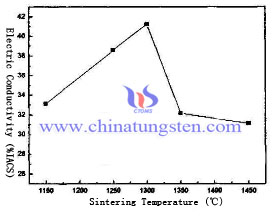
| Tungsten Copper Supplier: Chinatungsten Online tungsten-copper.com | Tel.: 86 592 5129696; Fax: 86 592 5129797;Email:sales@chinatungsten.com |
| Tungsten News & Prices, 3G Version: http://3g.chinatungsten.com | Molybdenum News & Molybdenum Price: http://news.molybdenum.com.cn |
Sintering Process Effect on Tungsten Copper Electrode Properties V
- Details
- Category: Tungsten Information
- Published on Tuesday, 24 November 2015 17:21
From the aspects of sintering kinetics, the sintered tungsten copper alloy electrodes tungsten powder mainly diffusion and flow of two different mechanisms. Especially in the media and high temperature sintering, surface diffusion becomes very obvious. At this time due to the fine-grained powder, which powder is larger than the surface area of the active surface of the large number of atoms, the diffusion surface it is relatively easy to carry out, which also makes sintered tungsten skeleton easily enter the third stage from the second stage.
If we can control the sintering in the second stage, the properties of tungsten copper electrode will be relatively ideal. The effect of sintering temperature on the hardness of tungsten copper electrode as follow:
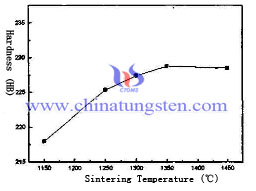
The graph shows that it is similar to the effect on the density of tungsten copper, which increases in the beginning and stabilize gradually by the increasing temperature.
| Tungsten Copper Supplier: Chinatungsten Online tungsten-copper.com | Tel.: 86 592 5129696; Fax: 86 592 5129797;Email:sales@chinatungsten.com |
| Tungsten News & Prices, 3G Version: http://3g.chinatungsten.com | Molybdenum News & Molybdenum Price: http://news.molybdenum.com.cn |
Tungsten Carbide Forstner BitsⅡ
- Details
- Category: Tungsten Information
- Published on Tuesday, 24 November 2015 14:49
In last part we know that tungsten carbide Forstner bits are for drilling deep and precise smooth-sided holes through in wood working and come in sizes from 8–50 mm (0.3–2.0 in) diameter. Here we simply explain the basic structure of the bits.
The tungsten carbide Forstner bit includes a center point which guides it throughout the cut (and incidentally spoils the otherwise flat bottom of the hole). The cylindrical cutter around the perimeter shears the wood fibers at the edge of the bore, and also helps guide the bit into the material more precisely. Some of the bits have a total of two cutting edges in this cylinder. Forstner bits have radial cutting edges to plane off the material at the bottom of the hole. Some of the bits have two radial edges. Other designs may have more. Forstner bits have no mechanism to clear chips from the hole, and therefore must be pulled out periodically.
Sawtooth bits are also available, which include many more cutting edges to the cylinder. These cut faster, but produce a more ragged hole. They have advantages over Forstner bits when boring into end grain.
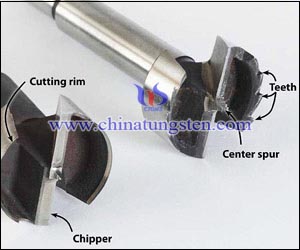
(To be continued. This article is divided into several parts. Here is part 2. For part 1 please refer to http://news.chinatungsten.com/en/tungsten-information/80700-ti-10454)
| Tungsten Carbide Supplier: Chinatungsten Online tungsten-carbide.com.cn | Tel.: 86 592 5129696; Fax: 86 592 5129797;Email:sales@chinatungsten.com |
| Tungsten News&Tungsten Prices, 3G Version: http://3g.chinatungsten.com | Molybdenum News & Molybdenum Price: http://news.molybdenum.com.cn |



 sales@chinatungsten.com
sales@chinatungsten.com